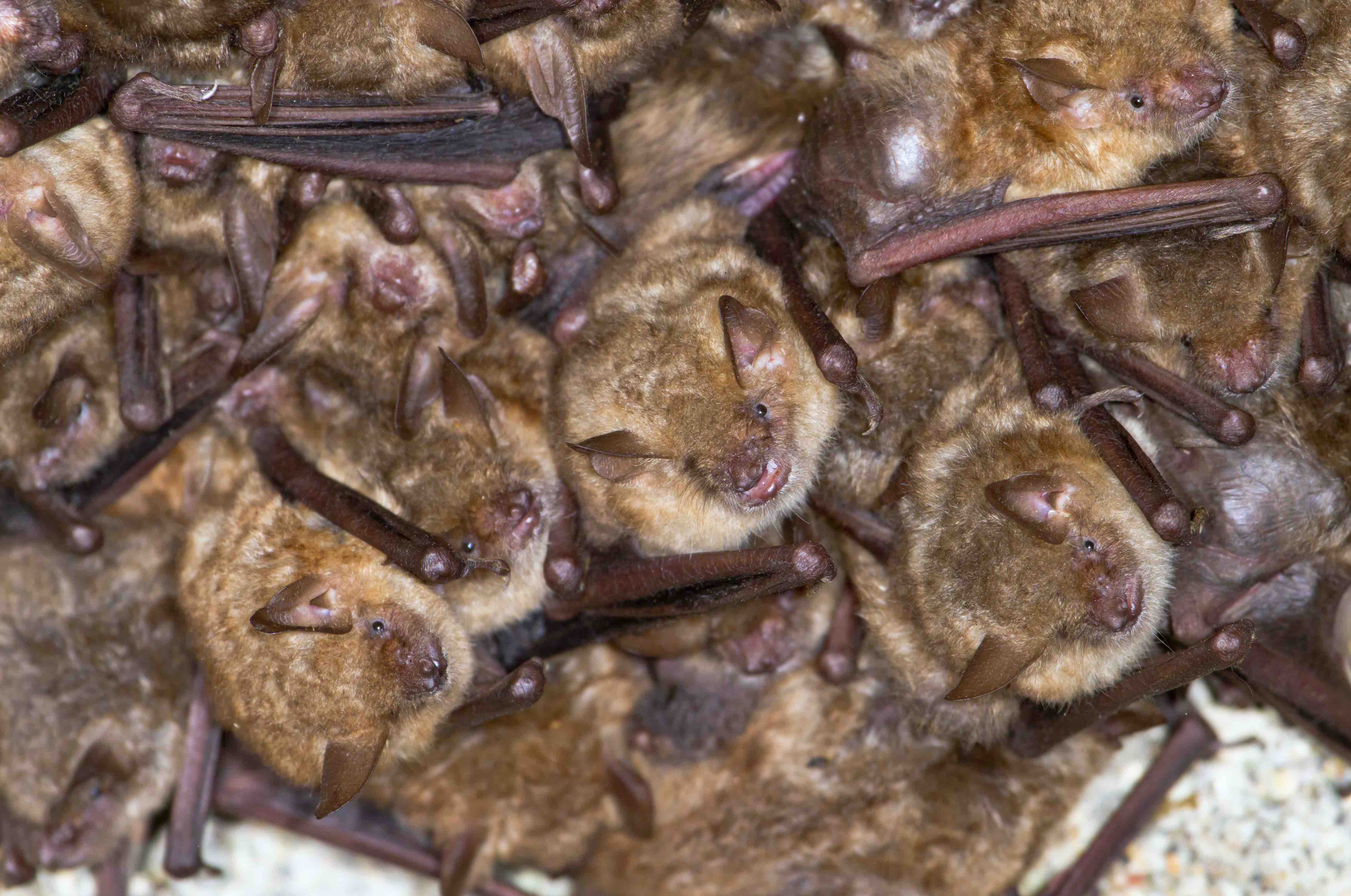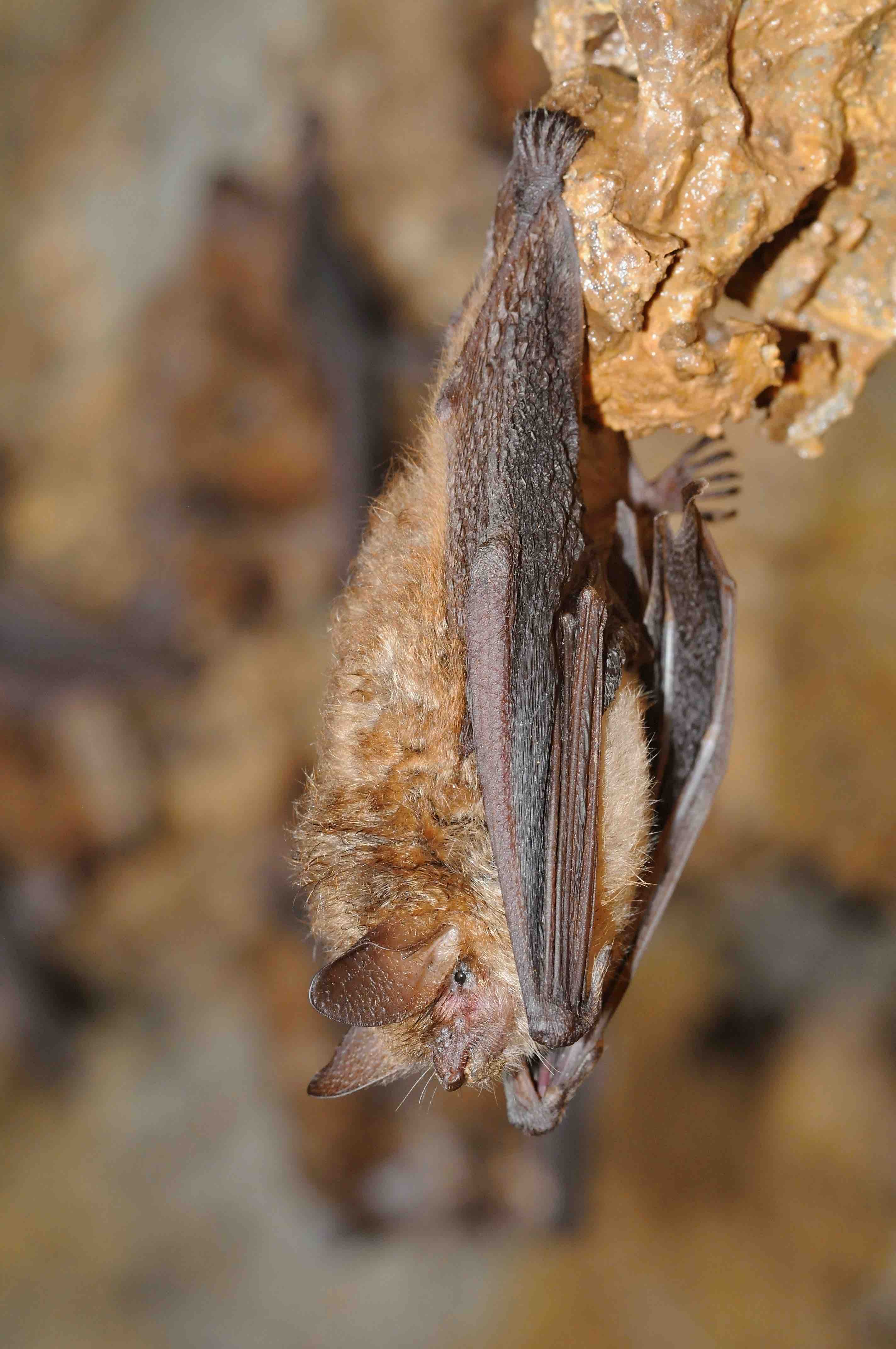Geoffroy’s bat (Myotis emarginatus)
| Family | vesper bat (Vespertilionidae) |
| Wingspan | 22-24 cm |
| Weight | 7-15 g |
| Appearance | reddish-brown dorsal fur, pale belly |
| Summer | Roosts in buildings |
| Winter | Hibernates in tunnels or caves |
| Conservation status | Red List Luxembourg Category 1 – Critically endangered (CR) |
Geoffroy’s bat is a medium-sized bat with a notch on the outer edge of the ear, which is typical of the species. It got its German name because of the fine hairs on the tail flight skin. The ciliated bat hunts in structurally rich open country with deciduous forests, orchards, semi-natural gardens and parks, but also in cattle sheds, which is rather unusual for native bats. The food base of this species is formed by spiders, weaver’s weeds, moths, web-winged flies (e.g. lacewings) and bipeds (flies and mosquitoes). When hunting, the bats fly close to the vegetation to pick the prey off the leaves. Like the Greater Horseshoe Bat, Geoffroy’s bat is thermophilic and has its European distribution centre in the Mediterranean region. In the north, its range extends to Belgium, the southern Netherlands and southern Poland. In Luxembourg, the Geoffroy’s bat is mainly found in the warmer Gutland region, where 11 reproduction colonies are known. The reproduction roosts are usually located in attics of buildings. The young are born between mid-June and mid-July. In autumn, the ciliated bats swarm before finding their winter quarters in caves or tunnels with high humidity. In frost-free quarters, the animals hibernate hanging freely. Normally, there is not much distance between summer and winter roosts. The species is threatened both by changes in its hunting grounds and by (destruction) of the roosts.


